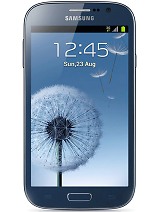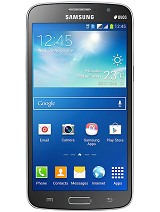Sony Xperia C Review
Introduction
The China-bound Sony Xperia C could be the right opportunity to smuggle some big-screened, quad-core goodness into markets where those things usually fetch a high price. It's certainly the right size too. Five-inchers don't necessarily have to come with high-end price tags. There's demand for affordable options too, which the Xperia C isn't the first to address. Sony has obviously been watching the Samsung Galaxy Grand, while HTC and LG aren't indifferent either.
So, the Sony Xperia C has dual-SIM support, which is almost a must-have in the markets Sony's interested in, a massive 5-inch display and a quad-core processor. So far, so good.
It is the company's first smartphone powered by a MediaTek chipset. Sony has so far always opted for either Snapdragons or (when the company still existed) ST Ericsson but, with China being the primary target market, it had little choice really. The latest MediaTek chips support both dual-SIM and quad-core processors, and they are light on the wallet too.
Affordability is, of course, an important reason, considering Asian markets are teeming with sub-$200 quad-core droids and competition is fierce. The likes of Lenovo, Micromax, Xolo, and many more, are ready to offer a big enough screen and decent feature set on a bargain.
What this means is the Sony Xperia C should be preparing for a full-scale war. Let's check the ammo:
Key features
- Tri-band GSM/GPRS/EDGE and dual-band HSPA support
- Dual SIM, dual stand-by support
- 42.2 Mbps HSDPA and 11.5 Mbps HSUPA
- 5.0" 16M-color TFT capacitive touchscreen of qHD resolution (540 x 960 pixels) at 220ppi
- Android OS v4.2.2 Jelly Bean
- Quad-core 1.2 GHz Cortex-A7 CPU, PowerVR SGX544 GPU, MTK MT6589 chipset
- 1 GB of RAM
- 4 GB of built-in storage (2 GB user available)
- microSD slot (cards up to 32GB supported)
- 8 MP autofocus camera, single LED flashlight, geo-tagging, touch focus, HDR, hardware shutter key; VGA front-facing camera
- 1080p @ 30fps video capture
- Wi-Fi b/g/n, Wi-Fi hotspot
- Bluetooth 4.0 with A2DP
- GPS with A-GPS
- Accelerometer, ambient light and proximity sensor
- Standard 3.5 mm audio jack; Walkman music player with many audio enhancements
- Stereo FM radio with RDS
- microUSB port (charging)
- Built-in LED strip provides a breathing light and notification light
- 2,390mAh Li-Ion battery, non-replaceable
For Full Specs Click Here
Main disadvantages
- Low pixel-per-inch ratio
- No Mobile BRAVIA engine
- No scratch protection for the screen, Gorilla Glass or otherwise
- Limited internal storage for installing apps
The Xperia C obviously didn't remain confined within Asian boundaries as various European retailers are already shipping it at very attractive prices. It sure isn't the fastest or the most feature-rich of phones, but it sounds like a great bang for your hard-earned buck. Will that be enough to probably forgive the lower resolution screen and the other potential deal breakers?
Final words
Originally planned for China and other Asian markets, the Sony Xperia C obviously did better than expected and quickly made it well beyond its intended destination. Or it could be that Sony had global availability in mind from the start - only not making too much noise after the official China debut.
Oh well, the Xperia C may not be the kind of phone to brag about but has obviously done more than a few things right. The phone is designed to look like the Xperia flagships and is built to high standard. The Android experience is reasonably fluid, something Sony did well to build on with a good set of home-brewed apps and a properly spec'd camera complete with 1080p video recording.
We should note that the specs don't quite translate into stellar image quality but the Xperia C is obviously not going to compete with top-of-the-line cameraphones. The screen resolution is perhaps not enough for the size but, after all, cheap screen real estate involves compromise. In the Xperia C's case that's pixel density, Bravia engine and Gorilla Glass.
We should not forget either that the right thing to do in this price bracket is match or outdo the competition without investing over the odds. With Asian markets flooded with affordable "high-end" phones, Sony went for the obvious choice of chipset, hardware and features hoping the quality Sony is known to deliver will tip the scales in its favor.
There's a different kind of competition to consider too - dual-SIM droids are thriving lately with most of the major manufacturers seriously involved.
Samsung may have closed a lap on the others with a second generation of their dual-SIM enabled Galaxy Grand. The original Galaxy Grand was released a year ago with a 5" WVGA display, an 8MP camera and a dual-core 1.2GHz Cortex-A9 processor. There's less raw performance compared to the Xperia C, and even fewer pixels on that massive screen. A successor has already been announced though to fix that. The Galaxy Grand 2 boasts a 5.25" 720p display and a quad-core processor, along with an 8MP camera with 1080p videos. It will hit the shelves any moment now, but it will likely costs more than the Xperia C.
Special Thanks To: GSMArena.com








Amazing blog and very interesting stuff you got here! I definitely learned a lot from reading through some of your earlier posts as well and decided to drop a comment on this one!
ReplyDelete